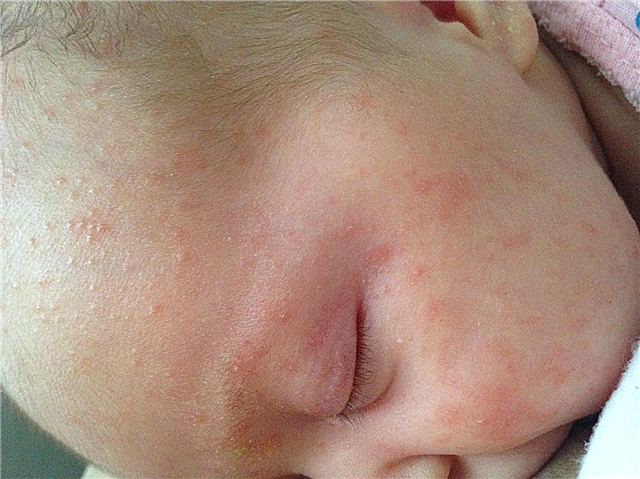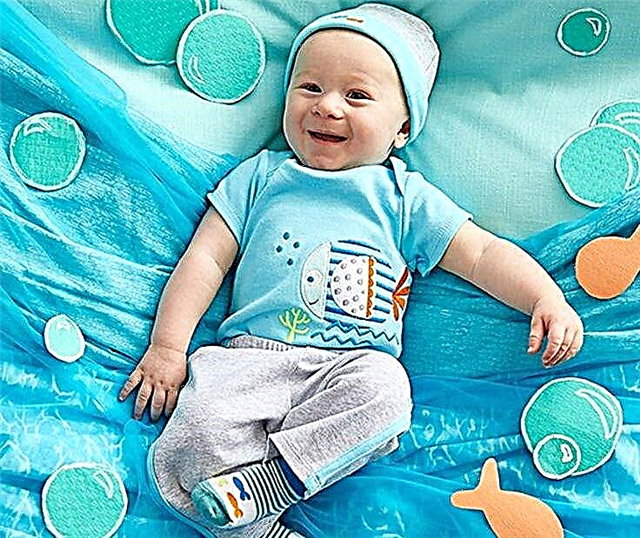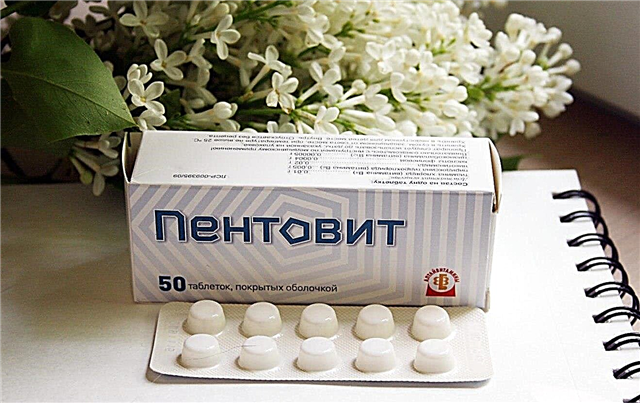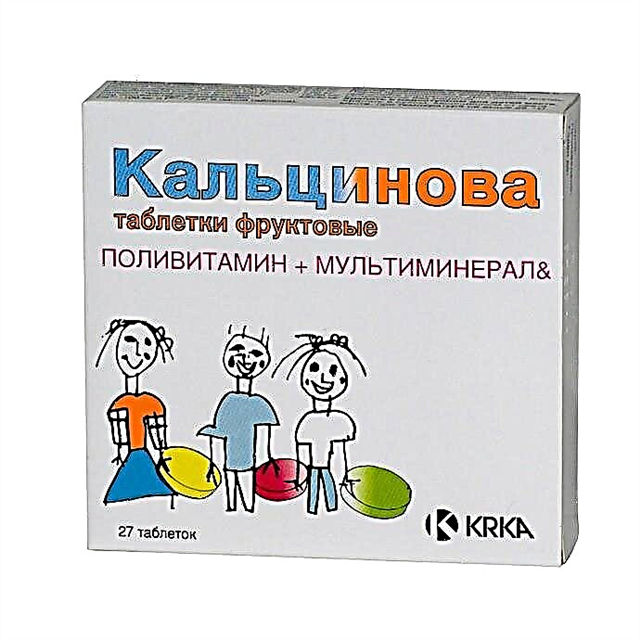Every woman who has become a mother, from the first minutes of the long-awaited meeting with the child, closely monitors his condition. At first, she is worried about puffiness, which goes away by itself a few hours after giving birth, on the second day of life, the baby's skin becomes covered with red spots, similar to small pimples with a red halo. This rash can spread all over the body, including the scalp, and may only be localized on the face. After some time, from four to nine days, these small pimples first turn into white, then into small black dots, and later disappear altogether.

Postpartum rash
Additional Information. In the maternity hospital, each mother is visited by a neonatologist several times, who, after examining the newborn, will explain that this rash is not dangerous, it does not need to be treated. On the fourth day after birth, the mother and child will be discharged home, when the baby's hormonal acne almost disappears.
Symptoms of acne in newborns
Acne of newborns appears, as a rule, on the second day after birth. It does not affect the general condition of the body, it is not accompanied by a flow from the nose. The body temperature remains normal, itching does not occur. The rash goes away on its own after 4-9 days. Most acne is localized on the face, back and chest. Hands and feet are less prone to rashes. The foci of the rash cannot be detected visually, since it spreads evenly, without forming separate islands.
Causes of acne in newborns
The reason for the appearance of acne on the skin of the face and body in babies is biological processes in the intestines. The body of a newly born child has no experience of coexistence with bacteria. When the first food is received, colostrum or formula, the newborn's intestines become colonized with bacteria that help process the incoming food. Active processes of formation of intestinal microflora begin, which are reflected in the form of acne on the skin of infants. This type of rash does not carry any danger to the health of the child.
Distinctive features of newborn acne from allergies
In addition to newborn acne, babies are often exposed to allergic skin rashes. This type of redness indicates that special attention should be paid to the child's health. Allergies can be of two types: contact and food. A rash, with any kind of reaction to a stimulus, can look different and appear on different parts of the body.

Food allergy behind the knees
The main feature that distinguishes newborn acne from allergies is the even distribution of rashes throughout the body. Allergic rash concentrates on particularly delicate areas of the skin:
- on the cheeks;
- on the buttocks;
- on the folds of bending the arms;
- on the back of the knee.
How to distinguish acne from allergies on your own
It is not difficult to independently distinguish acne of the skin of infants from allergies. The easiest way to rule out food allergies is. If no more than 4 days have passed after birth, the rash does not need treatment, because such a child cannot have a food allergy. A woman who has given birth lays a newborn to the breast almost immediately after its birth. But her milk will begin to be produced only after 4-5 days. Until this moment, the baby feeds on colostrum - a liquid rich in substances necessary for an infant, resembling diluted milk in appearance. Colostrum does not contain substances that can cause food allergies.
Important! If the child has already been discharged from the hospital with his mother, and, after a few days, red spots or acne appeared on the skin, we are no longer talking about acne of newborns.
Neonatal acne is the cause of a bacterial infection and should be seen by a pediatrician. In 90% of cases, when pus appears, we can talk about staphylococcus. It is necessary to treat such rashes with the help of antibiotic therapy, which will be prescribed by a doctor.

Acne
If the rash is not acne, arose after the child consumes mother's milk or another product (after six months of age, complementary foods are introduced into the infant's diet), we can talk about food allergies. If we are talking about a breastfed baby, the mother should remember what new product she ate on the day the rash appeared. If complementary foods are introduced to the child, everything that the baby was fed with, in addition to mother's milk or formula, should be analyzed.
The most common allergenic foods are:
- egg white;
- cow's milk;
- wheat porridge:
- soy products:
- representatives of seafood (crayfish tails, shrimps).
Most often, rashes after consuming such products go away on their own, after stopping use. The foods themselves are harmless, but eating them in quantities that exceed the body's ability to process protein leads to rashes on the skin of children. In addition to protein products, allergic reactions in the form of a rash can cause:
- Strawberry;
- watermelon;
- chocolate;
- sugar;
- nuts;
- honey.
By eliminating them from the diet of a mother or child (or limiting them by reducing the dose of consumption when it comes to sugar), you can get rid of redness on the skin.
Among allergic reactions, contact type is often found - dermatitis. In this case, the rash occurs against the background of irritation of the skin itself. It is easy to distinguish contact allergy from food allergy - it is localized in the places of contact of skin with an irritant. The most common contact allergic rash occurs under the diaper. Buttocks, groin, external genitals turn red.

Redness under the diaper
In hot seasons, newborns' skin is especially prone to allergic contact rashes, as a result of constant exposure to diapers and artificial clothing, which, together with sweat, cause skin irritation. It is easy to diagnose such a rash on your own - it is enough to lay an undressed child on its side, placing a familiar diaper under it. After a very short amount of time, the part of the skin that was in contact with the diaper will be redder and more irritated than the one that came into contact with only air.
How to treat acne in newborns
When the child is only a few days old, and small acne appears on the body, this is not a reason to panic and take any measures. But food allergies, acne and contact dermatitis should not be ignored.
Pharmacy methods
Acne of newborns occurs as a result of the vital activity of staphylococcus, so only an antibacterial drug can solve the problem, which needs to be treated with lesions. Such a child should be immediately taken to pediatrics, where they will issue a prescription for the purchase of the medicine.
You can fight allergic rashes caused by food with the help of antihistamines. For children, they are available in the form of drops, which in small quantities (about 5) are mixed into the drink no more than twice a day.
Contact dermatitis is treated with topical medications. For redness under the diaper, use zinc-based creams. They simultaneously soften the baby's skin and protect it from damage in contact with urine and feces, quickly relieving irritation. You need to apply such a cream every time you wash your baby.

Lubricating the buttocks under the diaper
Each bath should be completed by applying baby cream to the entire skin of the baby. Tap water is loaded with chemicals that dry the skin, including chlorine. To preserve the protective function of the baby's thin skin, you need to lubricate it with baby cream every time, preferably without any aromatic additives.
Treatment of children's acne with folk remedies
An allergic rash on the skin of a child can be treated with a chamomile broth prepared at home. A cotton pad is moistened in the solution and treated with the affected skin. The plant has a calming effect, relieves irritation and redness. The method is effective for contact dermatitis. In the event of an allergic reaction to food, local exposure to the skin without correcting the child's menu will not lead to a positive result.

Chamomile broth
Prevention of neonatal acne
To prevent acne on the body of a baby due to food allergies, a nursing mother should monitor her diet, not eat foods that can cause allergies. The introduction of complementary foods should also begin with hypoallergenic vegetables and fruits. Monitor the sugar intake of an older child.

Optimal air parameters
Attention! Diaper dermatitis is easy to avoid if the room where the child lives is always cool and humid air, baby clothes are washed only with a special baby product, and then rinsed thoroughly. It is best to dress babies in light-colored cotton clothes, avoiding bright dyes.
You need to bathe babies without using detergents. The use of baby soap is permissible only when washing after a bowel movement. Daily application of a non-greasy, fragrance-free cream will provide additional protection against drying out.



